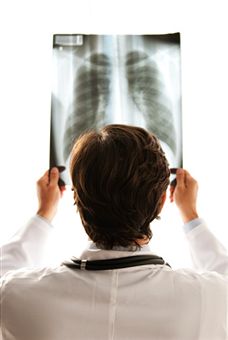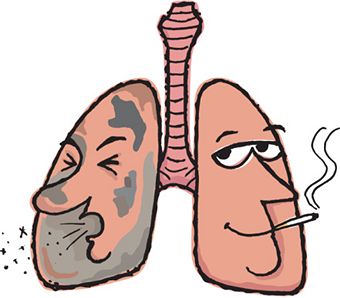About Phlegm
Phlegm is a word that everybody has heard of before, and it is a condition nearly everybody has had to deal with before, at some point in life. It is a viscous liquid mammalians secrete by way of the mucous membranes. However, phlegm itself, and its definition, is specifically limited to the mucus that is produced within the respiratory system, except for those that are found in the nasal passages, and especially that which is sputum, which is what is expelled by way of coughing.
In essence, phlegm is a gel based on water, and it consists of lipids, immunoglobulins, glycoproteins, as well as a few other substances. What each expelled instance of phlegm actually consists of will vary, depending on other factors, such as the condition of the immune system, the genetics of the person in question and what the climate is like outside. In terms of color, phlegm is known to range between a transparent state to that of a pale yellow and green.

Phlegm is known to carry the larvae of several kinds of intestinal parasites, such as hookworm. When phlegm comes out bloody, it may signify a much more serious illness that requires medical attention, such as tuberculosis.
However, it is also often a fairly benign symptom of an illness that is much more minor, such as bronchitis. In the case of the latter, the phlegm will usually have a light streaking of blood. When the amount of blood coughed up is a significant quality, it will require immediate medical attention because this is always a signal of something much more serious.
Symptoms
When a person coughs up a water based gel like substance, of which the color may vary, this is phlegm. Phlegm in itself is a symptom, of which many conditions cite it as one. Some conditions that may cite phlegm as a symptom as a signal of its presence include some of the following:
Allergies
Allergies occur when an immune system overreacts to a certain kind of substance or other kind of allergen. Also known as allergic reactions, this condition is very common, and several kinds of allergies exist. Some of these allergies may include respiratory allergies, food allergies or skin allergies, possibly resulting in cases of contact dermatitis or eczema.
Phlegm? Get Remedies Fast!
Several special cells make up the immune system of a person, and these cells travel throughout the body so that a person is able to defend against foreign agents that do not belong, such as bacteria and viruses. When a person is prone to allergies, and comes across their allergen, their immune system will react overzealously when they swallow, inhale or touch the allergen, such as dust or pollen. The end result is the system releasing histamine, which causes inflammation, swelling, itching and phlegm.
Nearly any substance is capable of causing allergies, provided the person is sensitive to it. Many people who have allergies are sensitive to more than one substance. The more common allergies that people have include those to mold spores, pollen, animal dander, dust, cockroach droppings, bee stings or dust mite droppings. Other possible allergies might include those to certain plants, certain foods, such as milk or eggs, certain medications, such as penicillin or aspirin, or to chemicals or other substances, such as latex.
Bronchiectasis
Bronchiectasis is a disease which causes damage to occur in the airways, which, in turn, causes them to become scarred, flabby and to widen. The airways are the tubes that are responsible for transporting the air in and out of the lungs. Usually, this condition is due to an infection that ends up injuring the walls in the airways or preventing it from clearing mucus.
Bronchiectasis is known to lead to serious conditions, such as atelectasis, respiratory failure and heart failure. Symptoms for this disease include:
- Bad breath;
- Paroxysmal coughing;
- Coughing foul smelling phlegm;
- Coughing yellow or green phlegm;
- Shortness of breath;
- Fatigue;
- Wheezing;
- Anemia;
- Morning cough;
- Chronic cough; and
- Coughing blood.
Chronic Bronchitis
This condition is an ongoing and progressive disease that embeds itself into the lower respiratory tract within the lungs, and it is a type of COPD, or chronic obstructive pulmonary disease. Its hallmark is its constant wet, loose cough, which produces a rather excessive instance of phlegm. Smokers are at a high risk of developing this at some point in their lifetime.
This disease is a seriously disabling one, and it has the potential of causing major complications, in additional to being potentially fatal. This is especially the case when it is paired alongside with emphysema, which is another very serious form of COPD. COPD is a major cause of disability around the world, and it is the fourth among a list of leading causes of deaths in the United States.
Nicotine Addiction
Nicotine addiction occurs in smokers. Its symptoms include:
- Increased heart rate;
- High blood pressure;
- Weight loss;
- The inability to stop smoking;
- Feeling withdrawal while attempting to quit smoking;
- Strongly craving products with nicotine;
- Avoiding activities where unable to smoke;
- Persistent cough; and
- Increased tolerance to the effects of nicotine.
Rhinitis
Rhinitis is when a person experiences inflammation of the mucous membranes found within the nostrils. Its symptoms include:
- Runny nose;
- Blocked nose;
- Nasal congestion;
- Catarrh;
- Sneezing;
- Nasal secretion crusting; and
- Sinusitis;
The symptoms of vasomotor rhinitis may include:
- A recurring inflammation of the nasal passage;
- Swelling of the nasal membrane;
- Sneezing; and
- A profuse nasal discharge that is watery.
Sinusitis
Also referred to as a sinus infection, sinusitis occurs when the air filled spaced that of which are found within the bones located around and in the nose become infected. These air filled spaces are known as paranasal sinuses. When they become infected, they will become inflamed. What this results in is the mucus membranes lining the sinuses swelling, and this swelling is what causes that familiar pain and pressure around and in the cheekbones and eyes.
This is a common condition that usually stems from a bacterial infection, a viral infection or, though rarely, a fungal infection. There are certain behaviors, injuries and conditions that make a person more susceptible to developing a sinus infection, which includes hay fever, smoking, trauma to the nose, allergic rhinitis, tooth abscess, as well as exposing the depths of the nose to viruses, funguses or bacteria by way of certain activities like picking the nose.
A sinus infection occurs when the immune system within the body is not able to stop any foreign and harmful fungi, bacteria or virus which have made their way into the sinuses and when the immune system cannot stop them from reproducing. The end result is the sinuses becoming inflamed, and it also results in the symptoms, such as a thick greenish mucus becoming discharged out of the nose, in addition to the facial pressure and pain that hallmarks the condition. Other more severe complications may occur, claiming the brain as a potential source of attack. Symptoms include:
- Coughing;
- Sneezing;
- Tiredness;
- Aches;
- Severe headache;
- Runny nose;
- Morning headache;
- Sinus pain;
- Tenderness at sinus region;
- Watering eyes;
- Fever;
- Weakness;
- Tiredness;
- Cough;
- Runny nose;
- Nasal congestion;
- Green nasal discharge;
- Postnasal drip;
- Sore throat; and
- Disturbed sleep.
Causes
There are several reasons which may result in phlegm:
- Allergies;
- Bronchiectasis;
- Chronic bronchitis;
- Chronic rhinitis;
- Cystic fibrosis;
- Hay fever;
- Hemoptysis;
- Nasal polyp;
- Nasopharyngeal carcinoma;
- Nicotine addiction;
- Postnasal drip;
- Rhinitis;
- Sinusitis; and
- Vasomotor rhinitis.
Risk Factors
Those who smoke are at a very high risk for developing phlegm, as well as those who have recurrent lung infections.
Treatment and Prevention
Treatment for phlegm will ultimately depend on what is causing the condition.

Smoking
The obvious treatment to stopping phlegm that arises due to smoking is to quit the habit. It is common enough for people to contract bronchial and lung infections, but they are far more likely in those who smoke on a regular basis.
If a smoker begins to cough up a greyish or a brown tinted phlegm, it is the body’s way of trying to tell them that they are taking the smoking way too far. Quit immediately before the phlegm begins to become streaked with blood, which will only preclude the inevitable diagnosis of lung cancer.
Sinus Infection
Those who are suffering from a sinus infection, influenza or a cold will find solace in a decongestant or a nasal spray. Even though postnasal drip may not necessarily be considered phlegm since it is the mucous produced by the glands that are present within the nasal cavities, it is nonetheless the most likely reason behind chest congestion. Therefore, consider taking a decongestant, such as Claritin, Sudafed or Zyrtec.
Bronchitis
For those who are suffering from a chest cold or some form of bronchitis, it is possible to take an expectorant in order to loosen up the buildup of phlegm. This is not similar to a cough suppressant, because an expectorant cough medicine intends to loosen up the phlegm in the throat and to cause cough, which is also known as a productive cough because it is productive for those who have an infection the bronchial tubes or lungs, or those who are dealing with chest congestion. A couple of common over the counter expectorants include Robitussin and Mucinex.
For those who wish to be rid of phlegm, they should refrain from taking any kind of throat lozenges or cough suppressants. Unless the cough medicine is explicitly labeled to be an expectorant, it will probably only make the problem of phlegm worse. When taking a medication that intends to suppress coughs or to numb the pain that a cough brings on, this usually results in allowing more phlegm and mucous to build up. This is because taking the medication effectively shuts off the parts of the body that are necessary to produce productive coughs.
Prevention
To keep the phlegm from recurring, spit it out after coughing it up rather than swallowing it again. Phlegm is a sticky film that is full of immunoglobulins and glycoproteins that serve to fight against infections, and it is supposed to attach to the linings of the lungs and the bronchial tubes.
In a manner of speaking, once a person begins to cough up their phlegm, it is a sign that the substance has completed its purpose and requires that it be expelled. Instead of swallowing it, spit it into the toilet or into a tissue. Swallowing the phlegm down again may reintroduce it into the pulmonary system again.

4 Comments
3 months ago I suddenly coughed just once in I saw blood. I went to the emergency .I had my chest x-rayfor tuberculosis,complete blood test. the doctor said Iam okay.all clear.now, today is tuesday oct.25, I went home from work,all of a sudden I coughed once I saw blood again. it’s red.is it possible if this is only irritation of the throat? do I ned to see thee dortor again.pls. tell me what to do.asap.
Went thru cancer treatments about 10 months ago and for the last month or more I’ve had extreme coughing with a LOT of phlem. Could the radiation, etc. cause this? Thx.
this is a nice description and list respiratory ailments, will be certainly helpful. Thanks
i suppered from this desease one in a year every year …could it be permanently cure